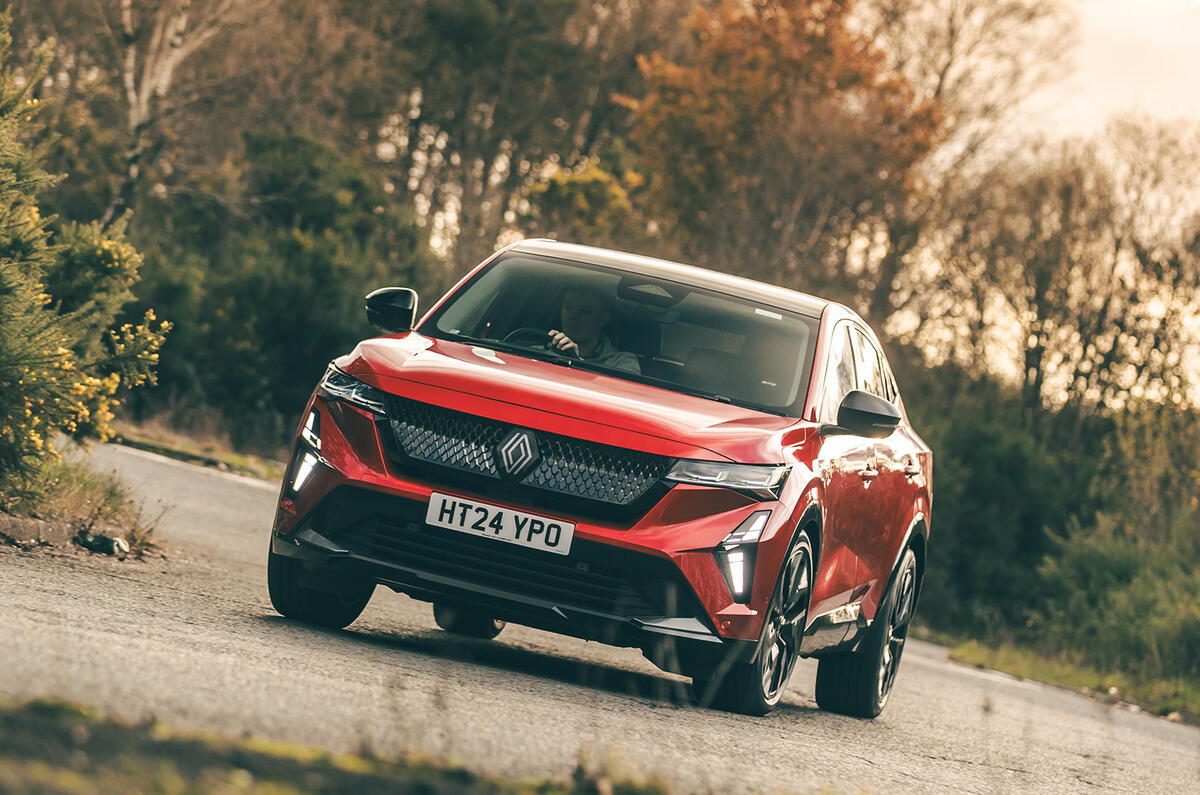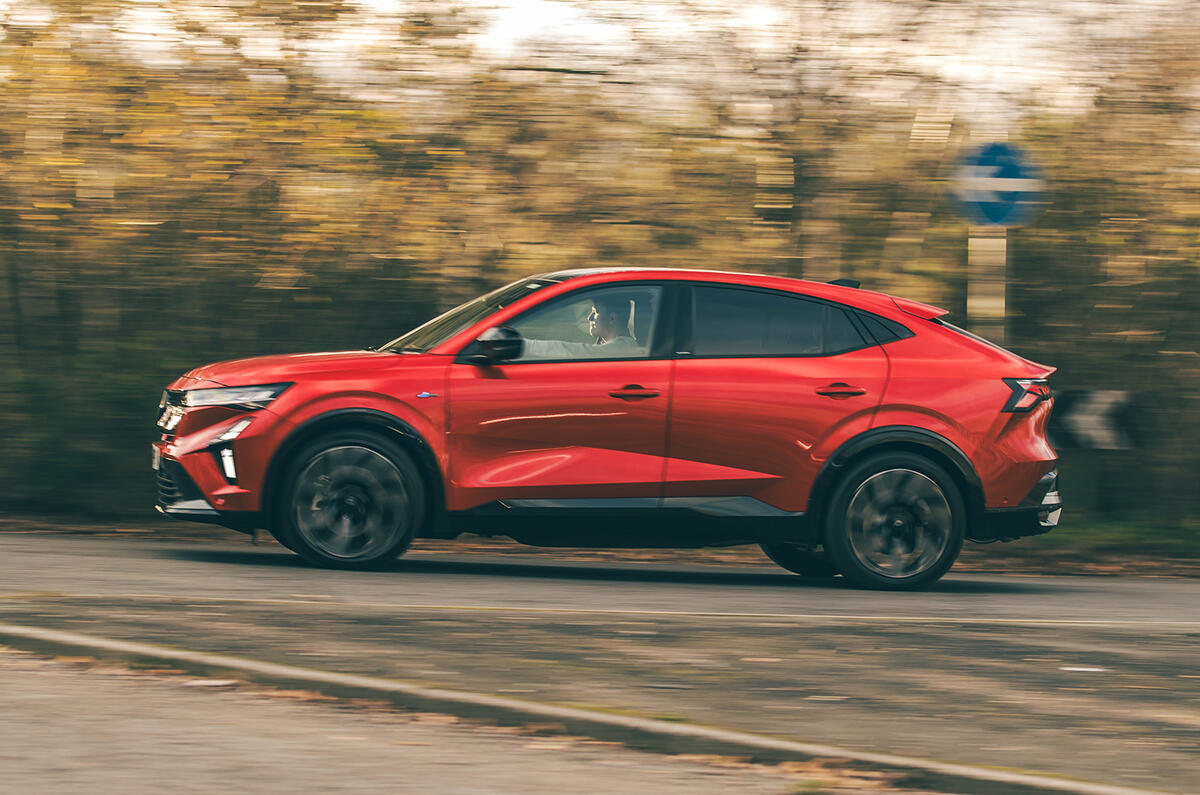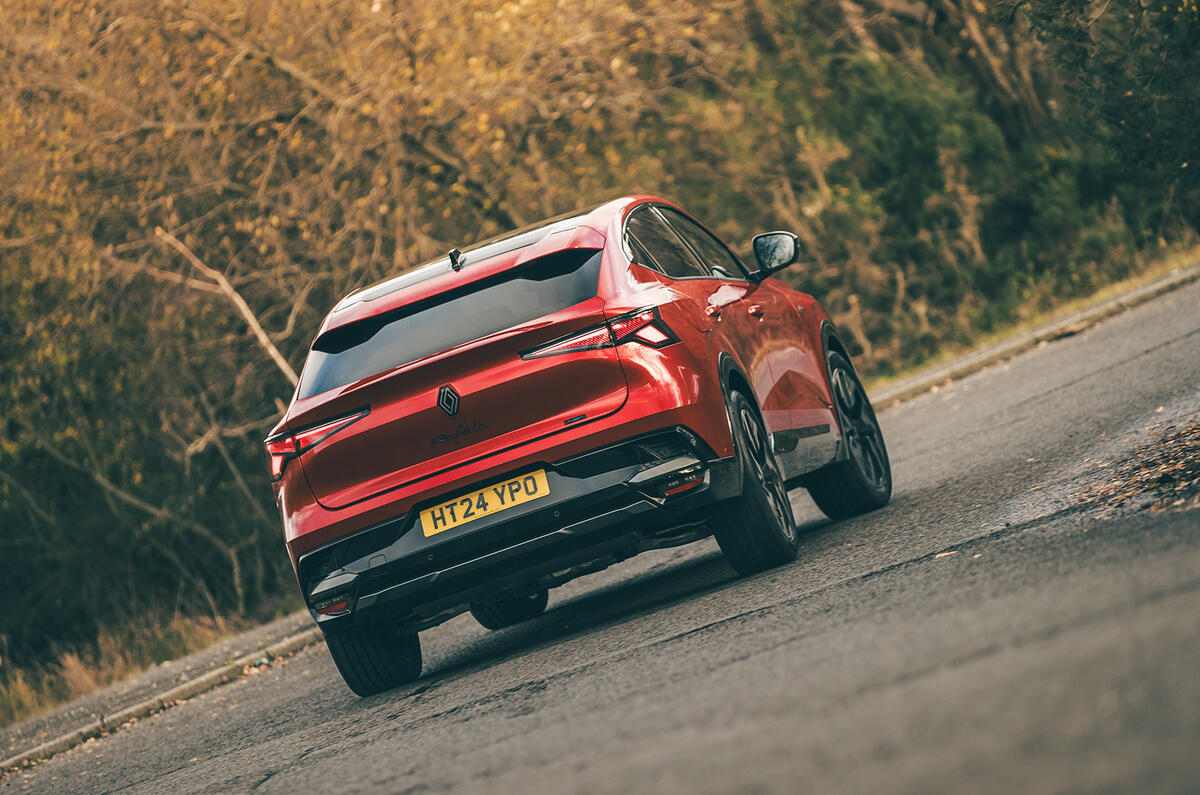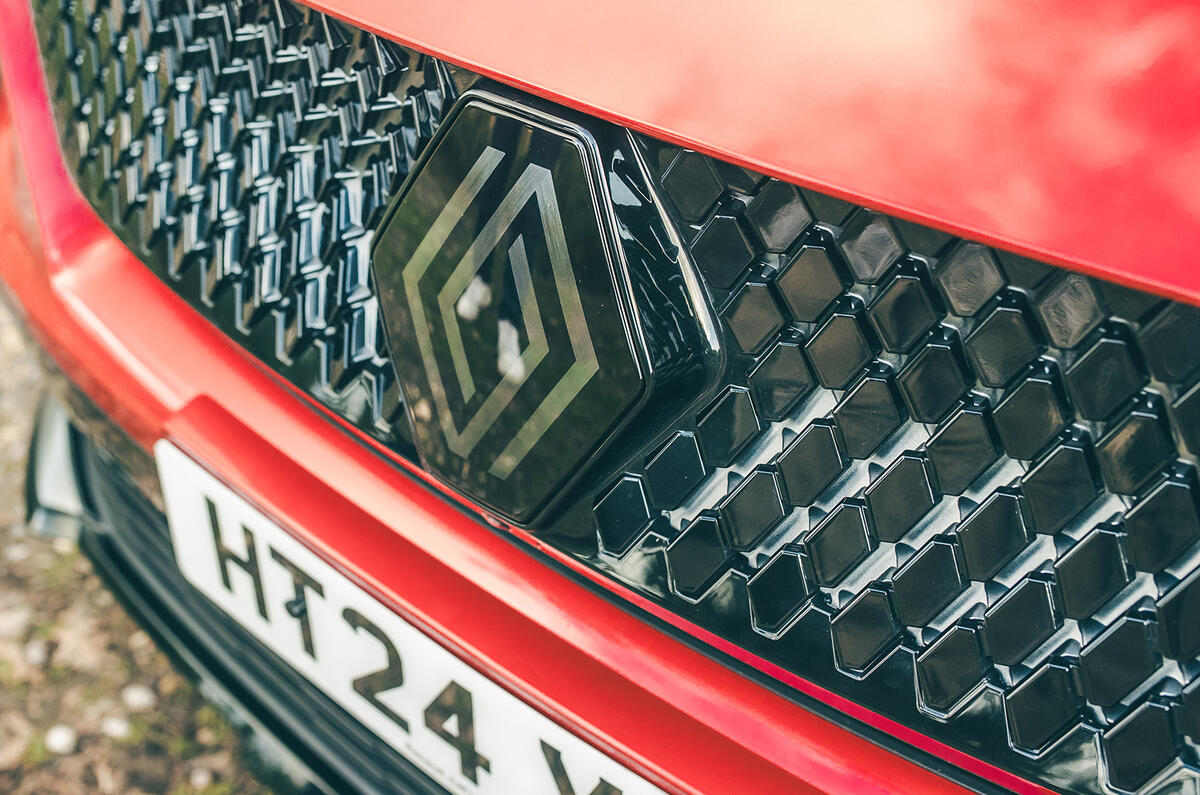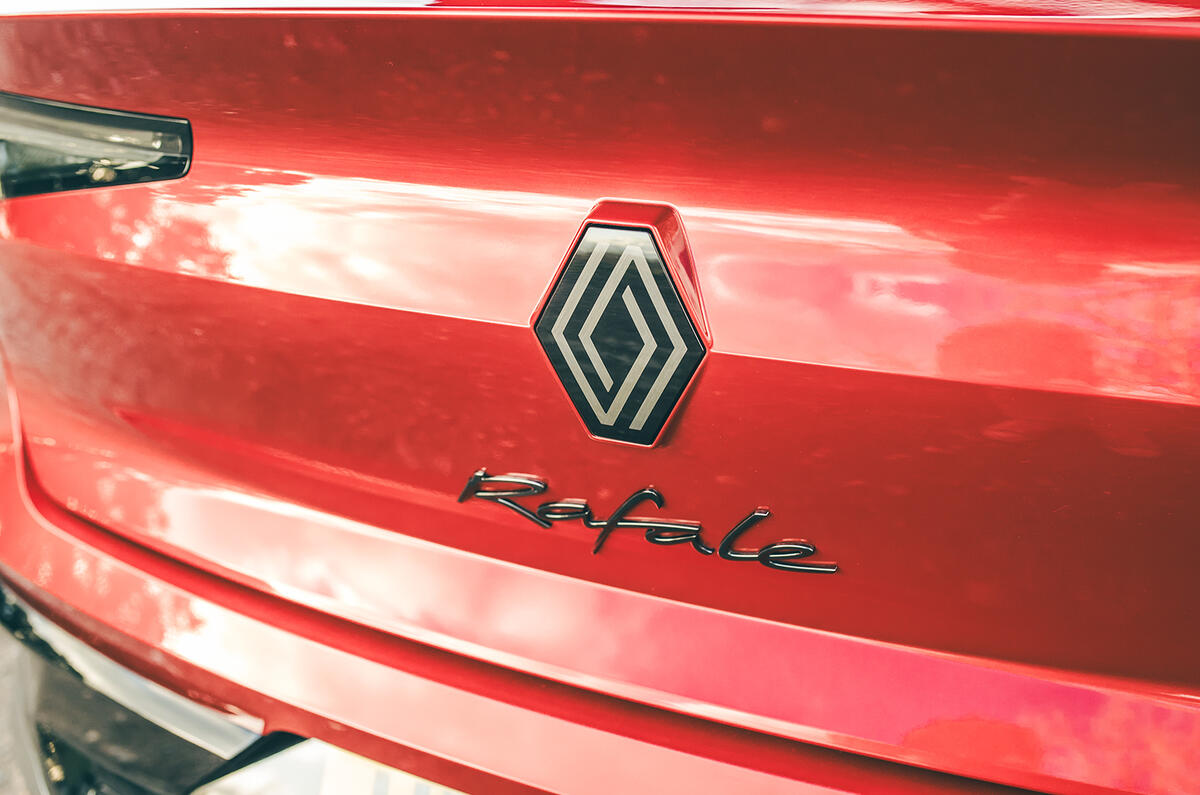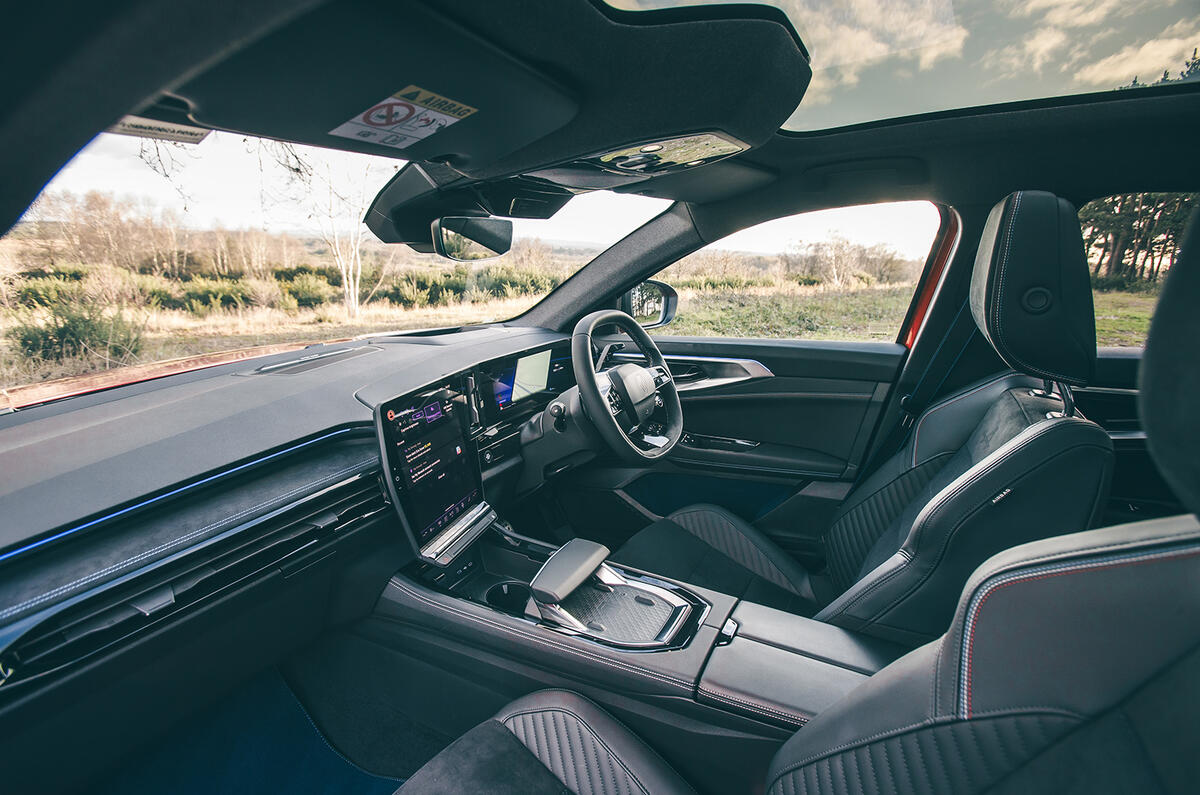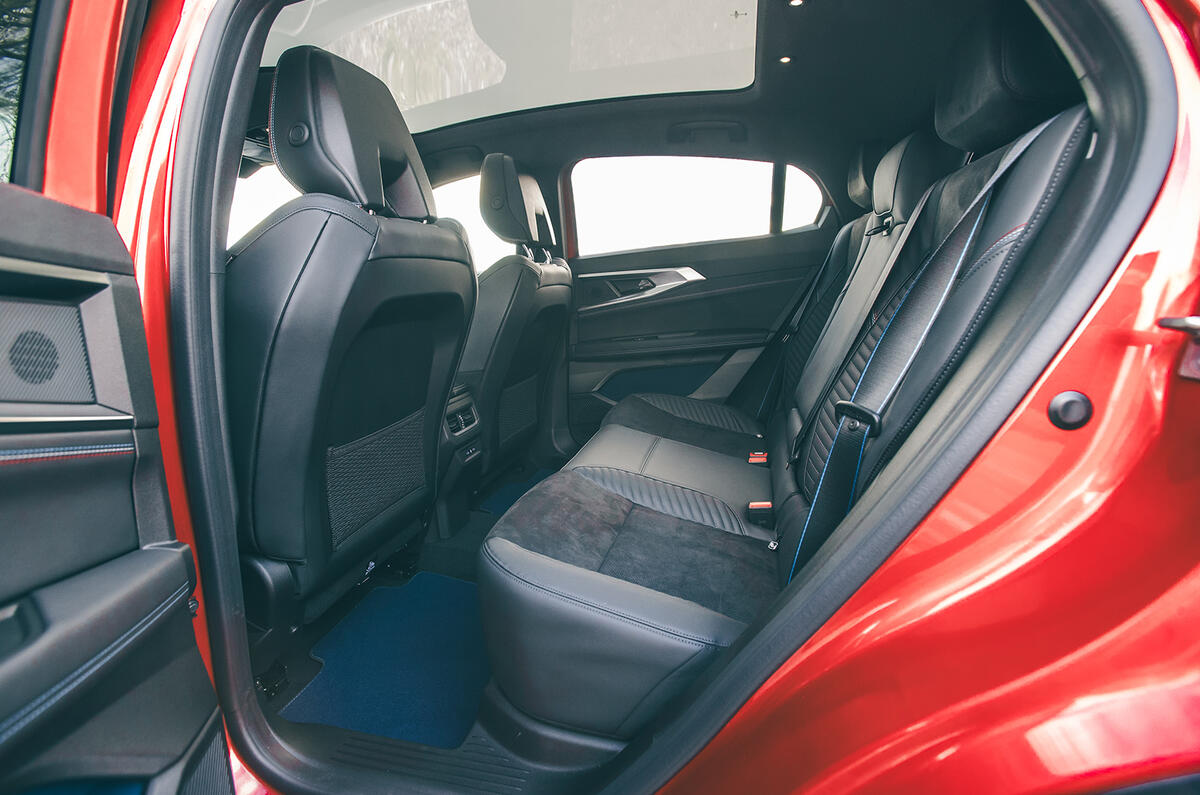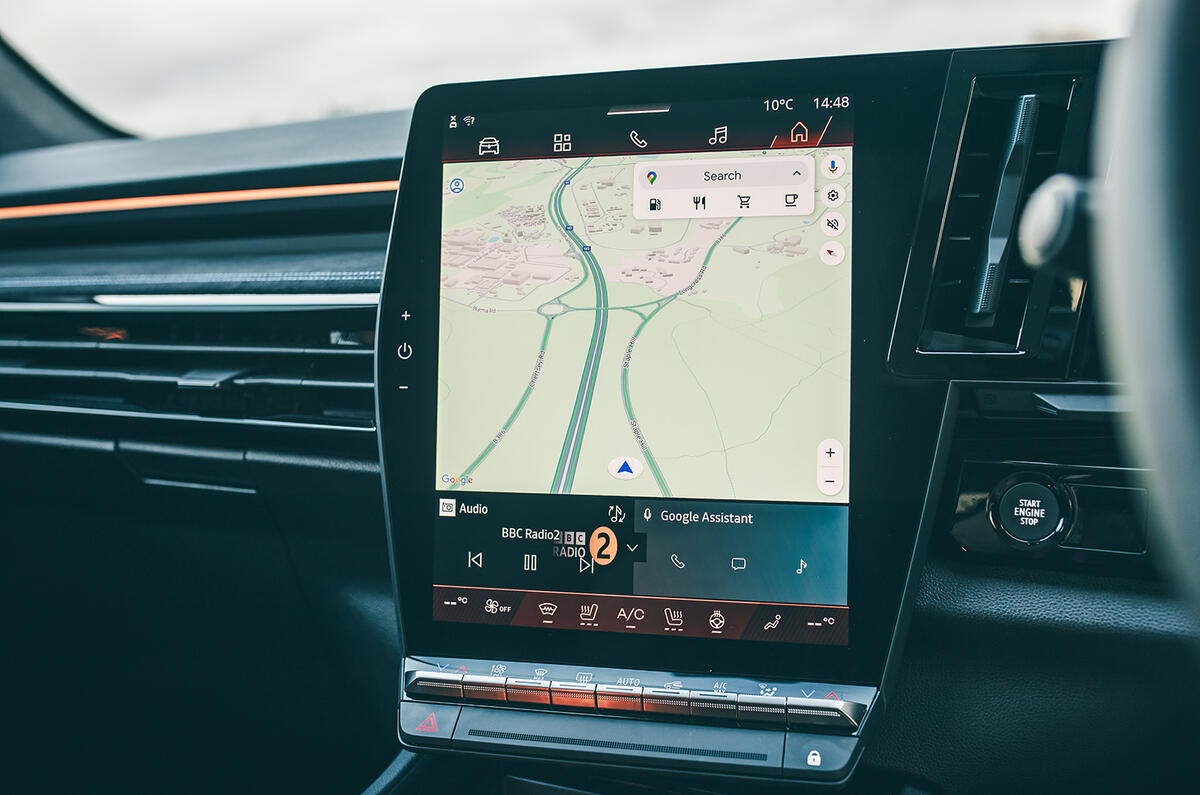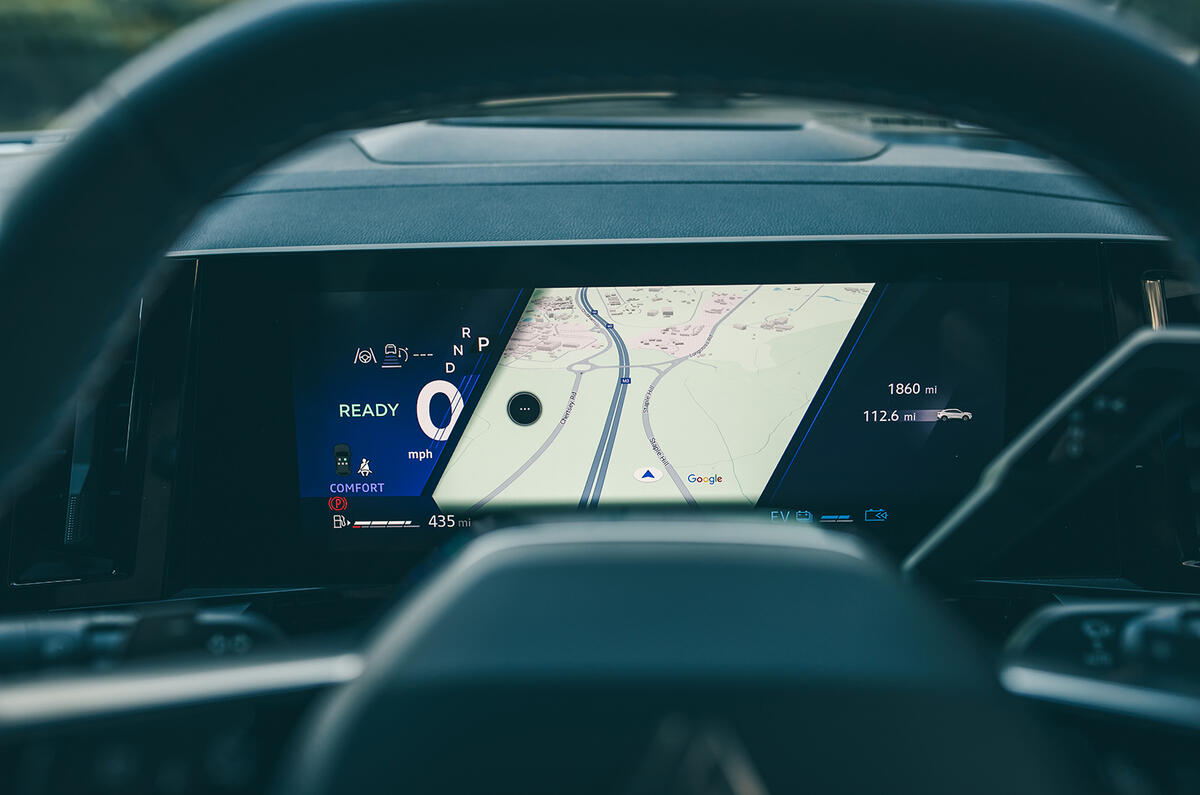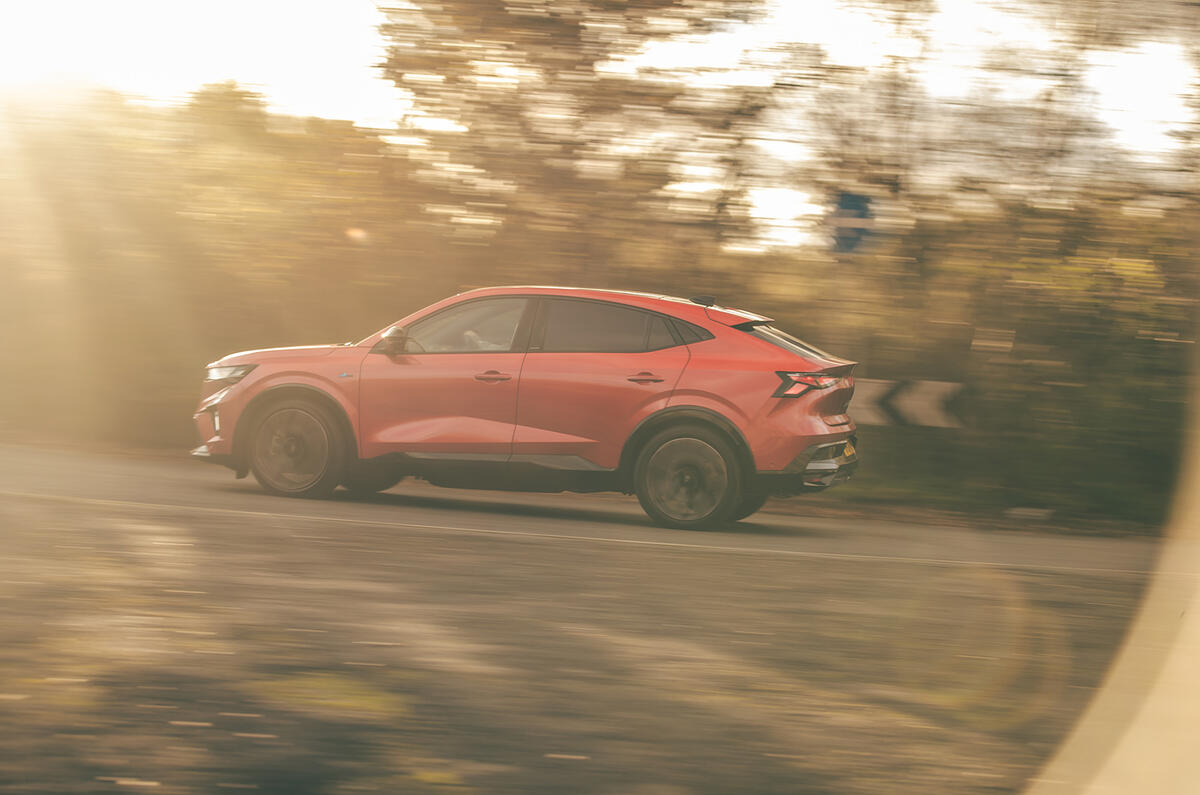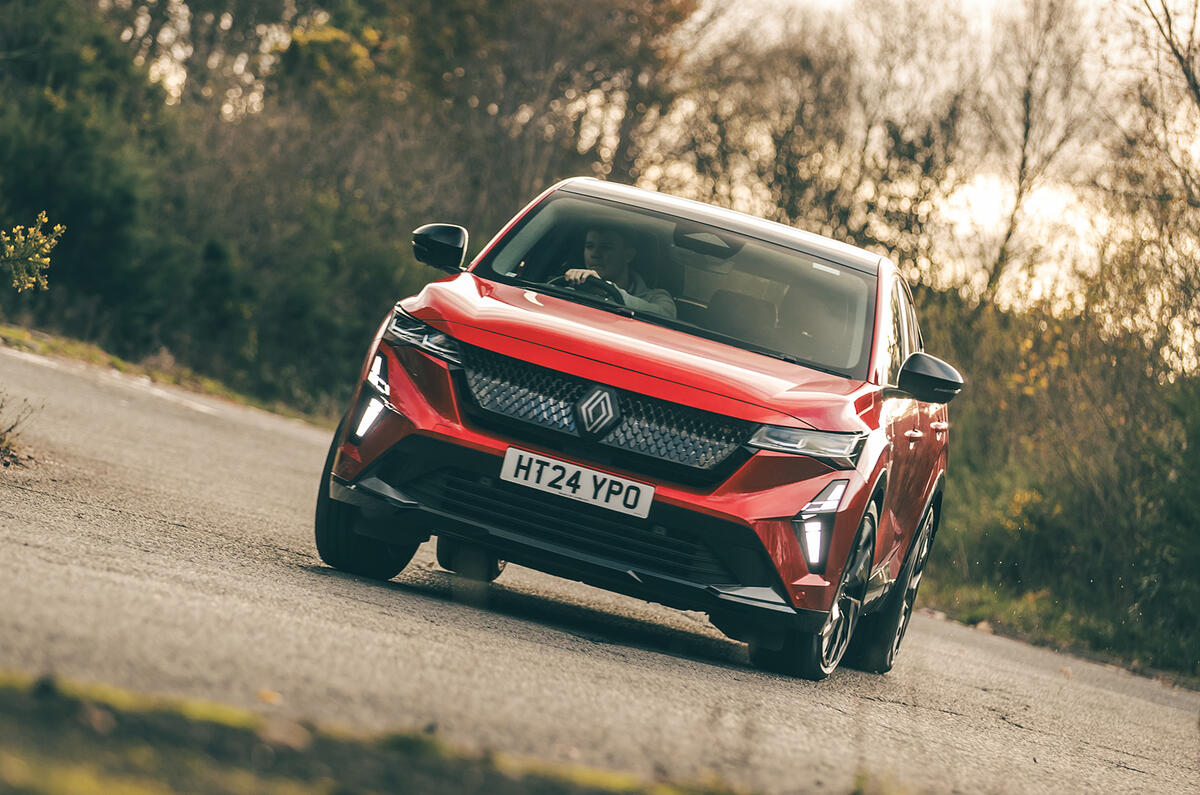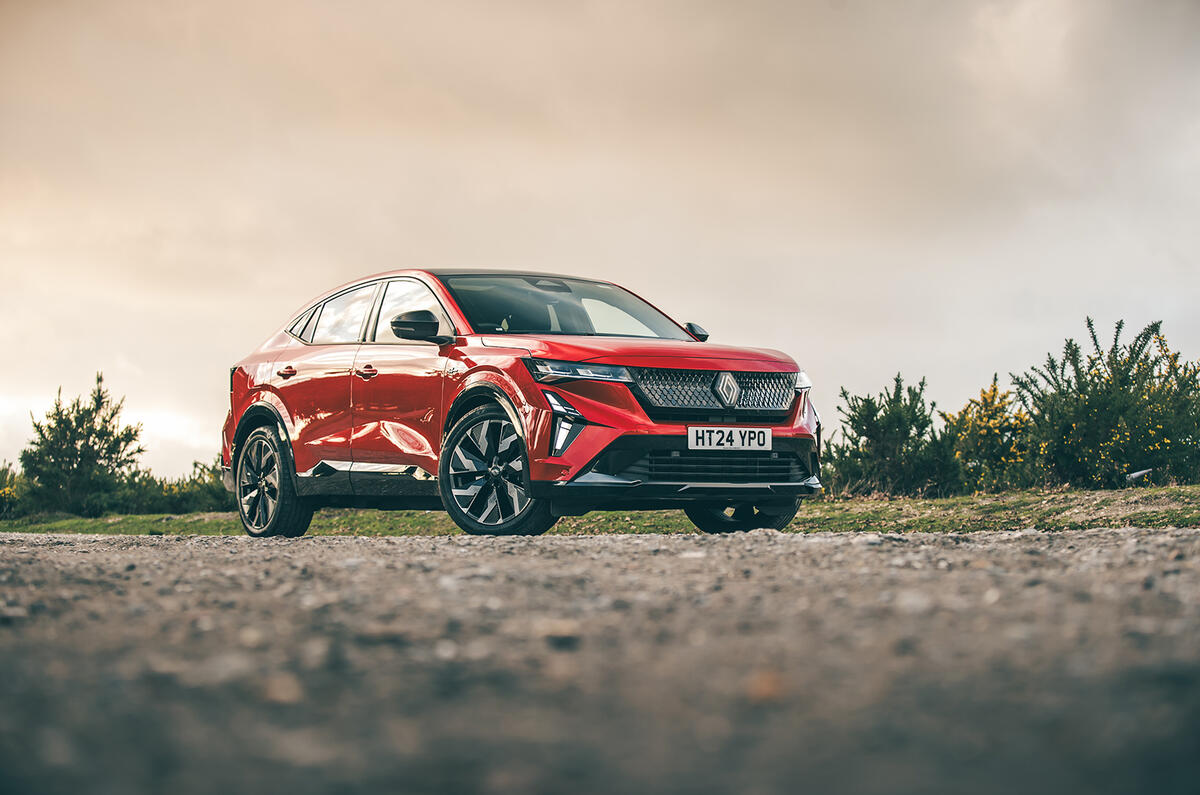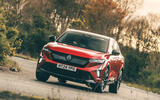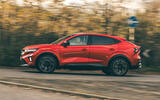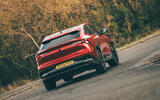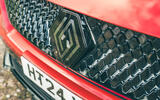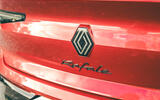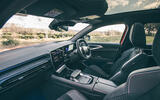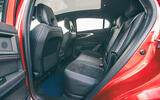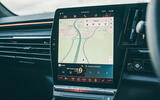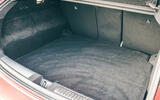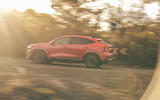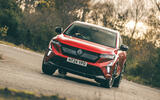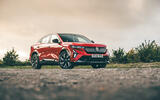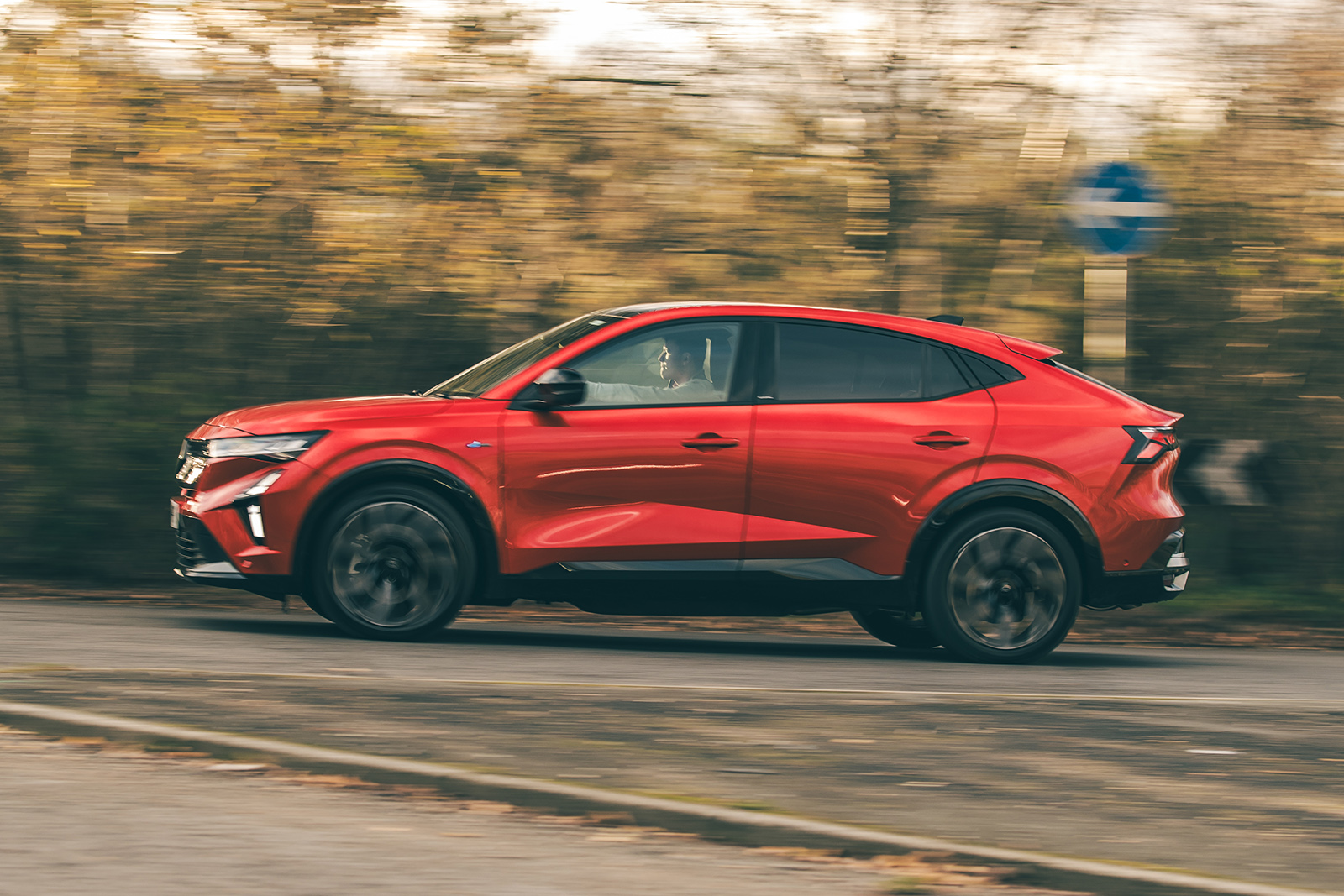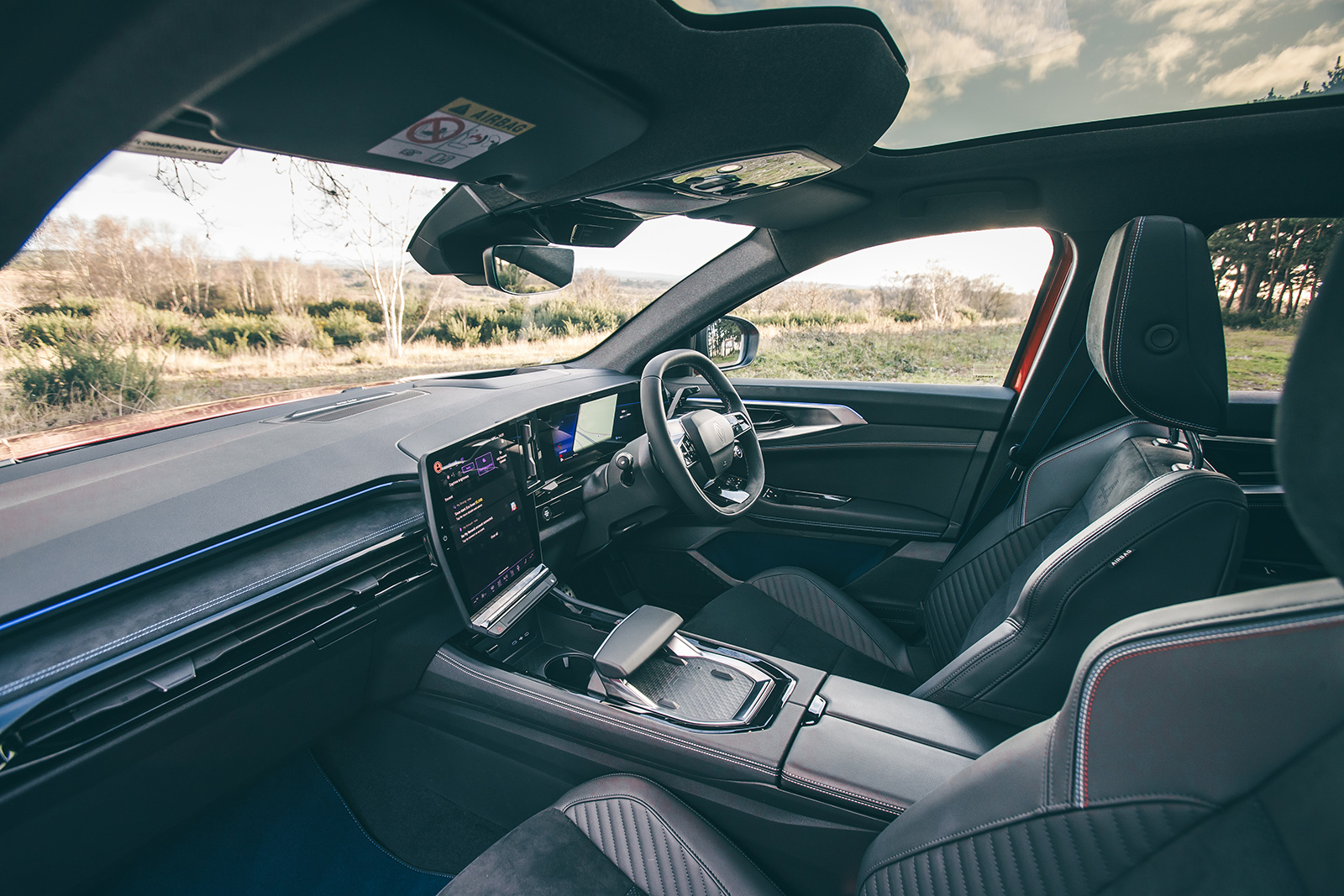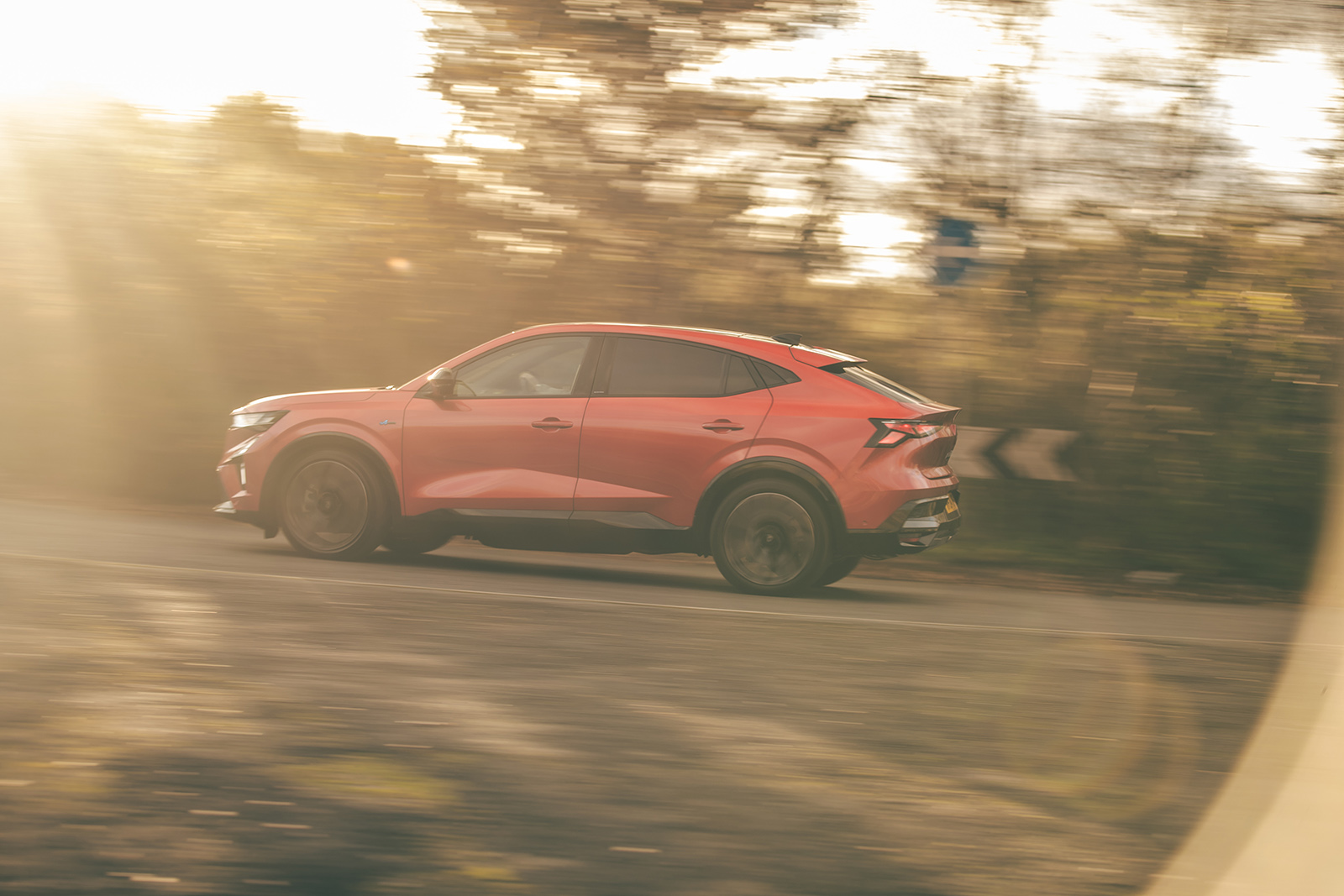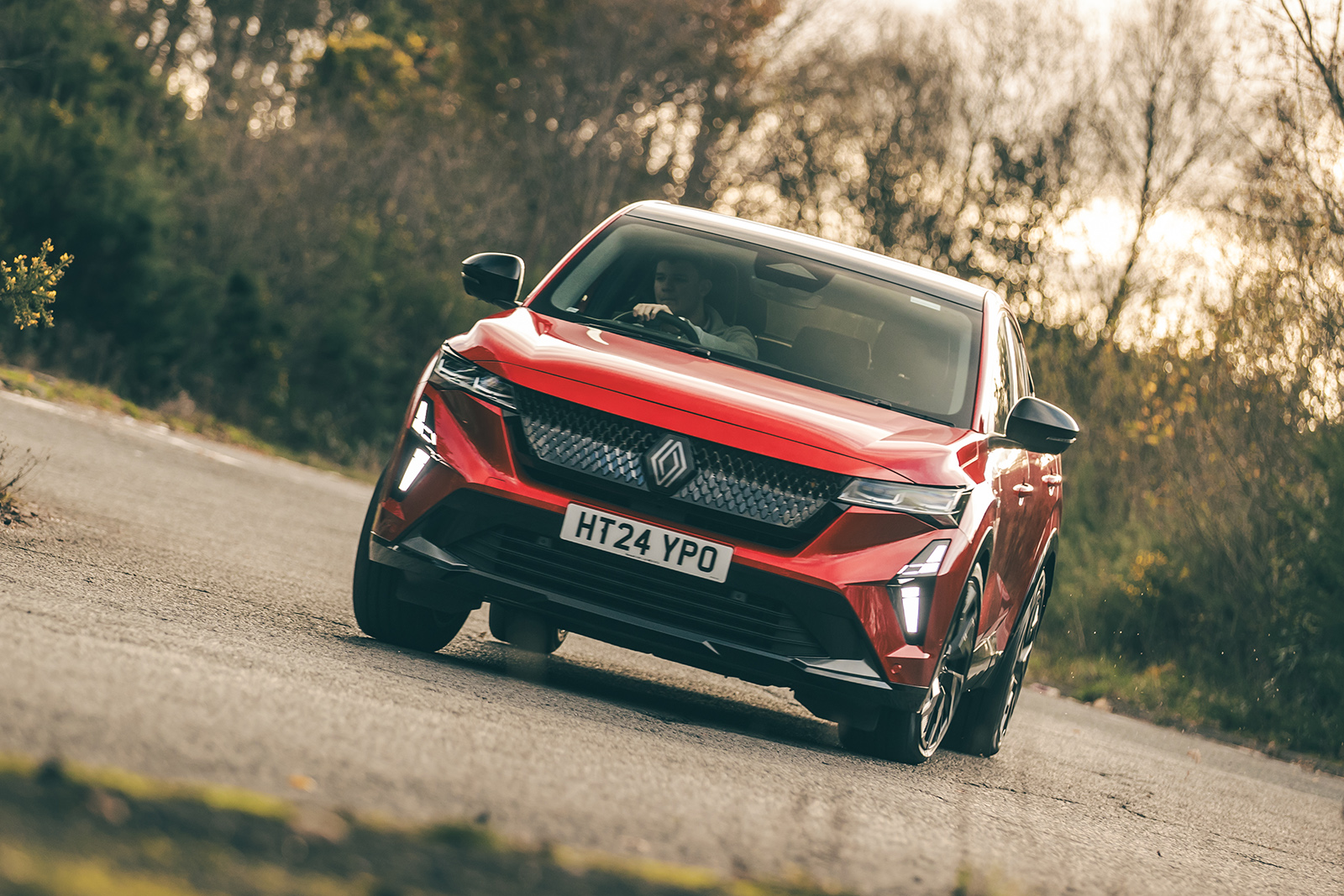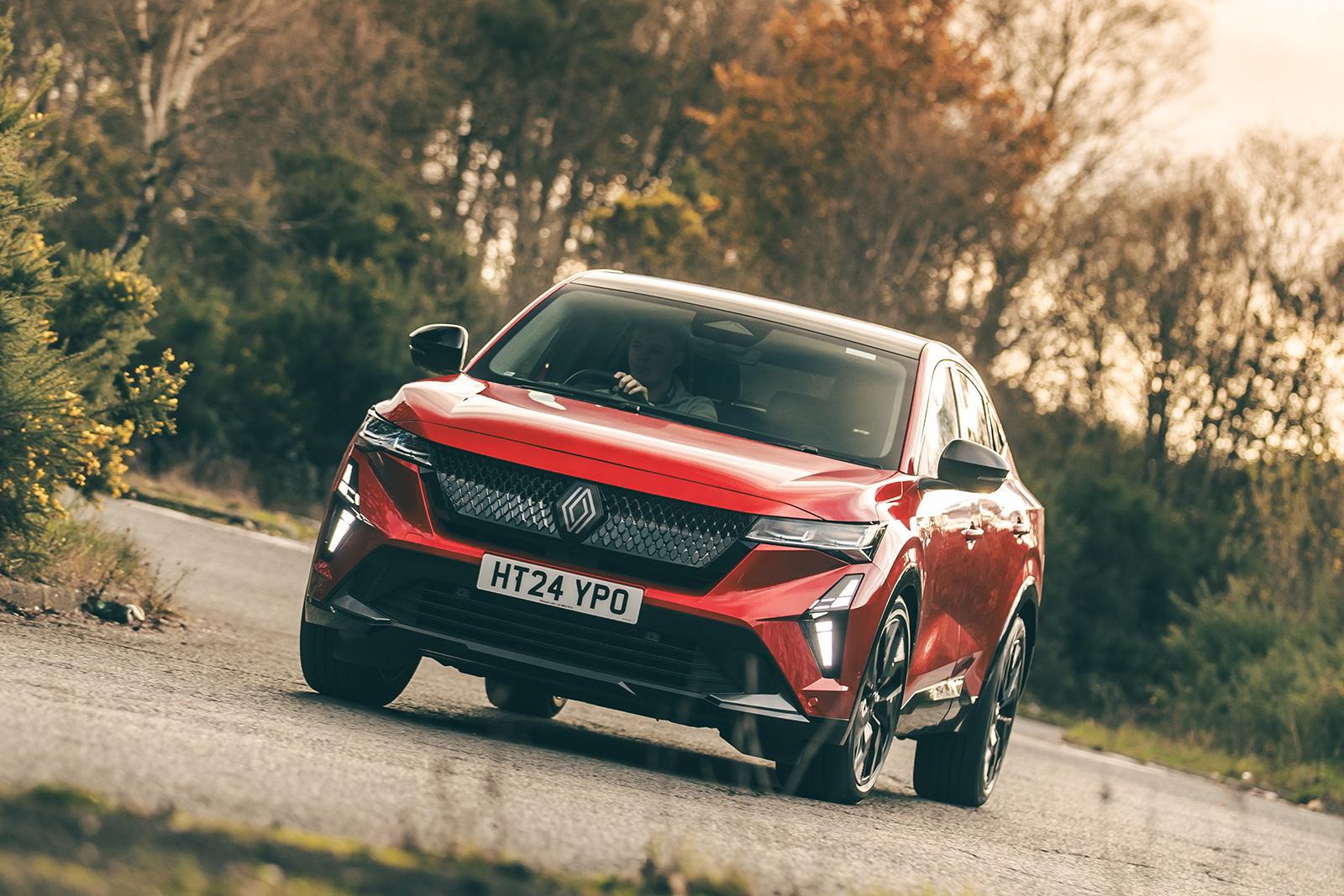The regular hybrid musters just 197bhp, which is no great shakes in the context of the 1.7 tonnes it's charged with propelling. The 0-62mph sprint, as a result, takes a pretty uncompetitive 8.9sec.
It would be quicker if both power sources worked together at all times. As it is, this powertrain launches with the engine off, meaning there’s just 67bhp from the electric motor to haul it off the mark - and you feel the deficit.
When the engine does wake up, it’s mostly as refined and perky as any other three-pot on the market, although the soundtrack is relatively characterless and it verges on thrashiness under full load.
When the closely related Austral was launched last year, it was criticised for the languidity of its clutchless, unsynchronised gearbox, which has five ratios for the engine and two for the motor - with one shared between the two power sources at all times to give a total of 15 ratios. Software updates – also applied to the Austral – have gone some way to rectifying that, and the Rafale shifts much more intuitively, but there’s still a tangible pause between ratios and a little kick when the drive is reconnected, and it’s difficult to guess when it’s coming.
It’s frustrating to be deprived of the ability to change gears yourself, too, in certain high-load situations, although the paddles behind the steering wheel give enough adjustment over the regen that you can use them in place of the brake pedal when coasting.
If you thought the.hybrid system was tricky to understand, you might struggle to fully appreciate the intricacies of the plug-in hybrid drivetrain - the only one currently available in a Renault and developed, strangely, exclusively for the Rafale.
Put simply, whereas in a ‘normal’ PHEV you might find a sole auxiliary motor integrated into the gearbox or powering one of the axles, the Rafale has three of the things dotted around its driveline: one with 67bhp on the front axle and a 34bhp starter-generator in the gearbox – carried over from the full hybrid – and a second traction motor at the rear with 99bhp.
All up, the four power sources combine to give an appreciably meatier 296bhp - enough for a quick-but-not-blistering 0-62mph time of 6.4sec.
There’s a link to be drawn here: Alpine’s first bespoke EV, the A390, will also be powered by a trio of motors, although the rationale behind that pertains more to the dynamic advantages of being able to vary the torque distribution from front to back and side to side – a key component of making a heavy car handle light a light one.
The Rafale PHEV has less overtly sporting pretensions, but naturally the swap from front- to variable four-wheel drive will have a bearing on how it handles (which we will come onto later).
For sure, the added grunt brings a tangible improvement in vivacity and zip, the extra shove from that rear motor helping to cement the 4x4’s sporting credentials in a straight line.
It’s still not whip-crack rapid, naturally, but certainly warmed up to the extent that you can tear away from traffic lights and nip into fast-closing gaps that would be out of the reach of the standard car.
It’s also a more competent cruiser as a result, needing less of a run up to attain motorway speeds, and still with enough poke in reserve once you get there to effortlessly dispatch overtakes.
In Comfort drive mode, where it will surely spend the majority of its time, it will drive as far as possible on pure-EV power, which makes for quiet and composed running around town, and the addition of a second motor means it feels roughly comparable with some lower-powered electric cars.
Sport mode uses both electric motors in tandem with the petrol engine to give the full 296bhp, which is where the Rafale is at its pokiest and most engaging. But the trade-off is a comparatively coarse and uninspiring soundtrack that reveals the limitations of a 1.2-litre three-cylinder petrol engine in this ostensibly sporting context.




